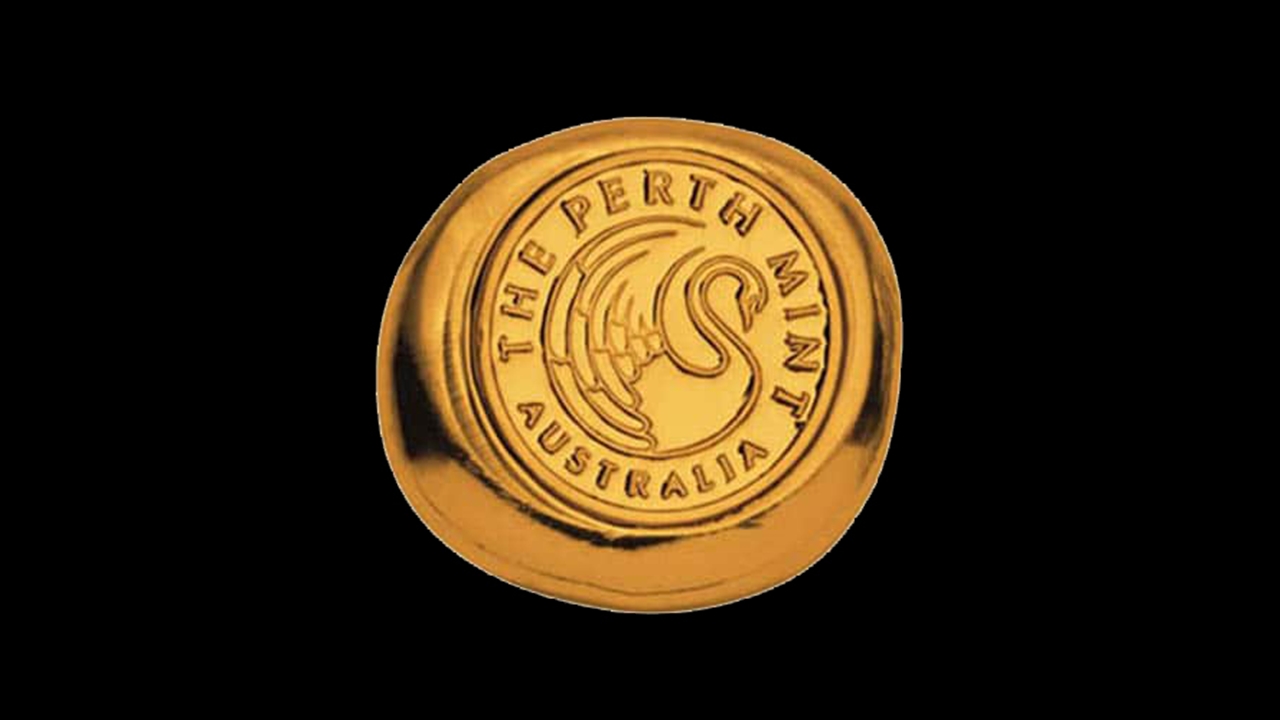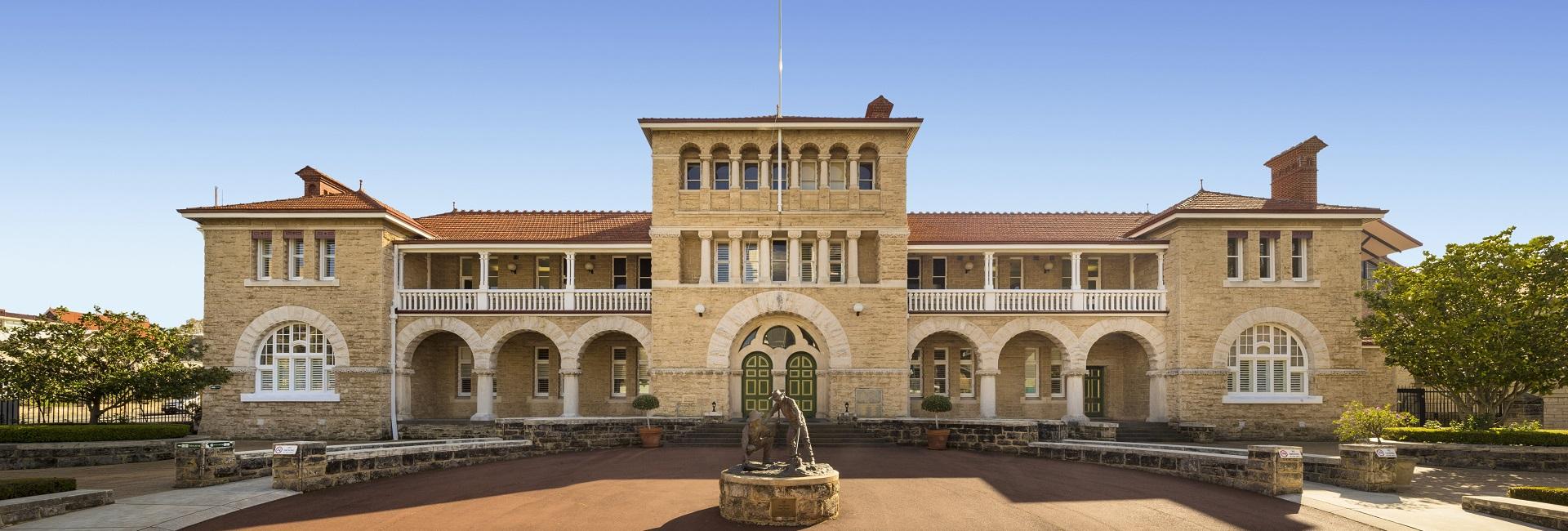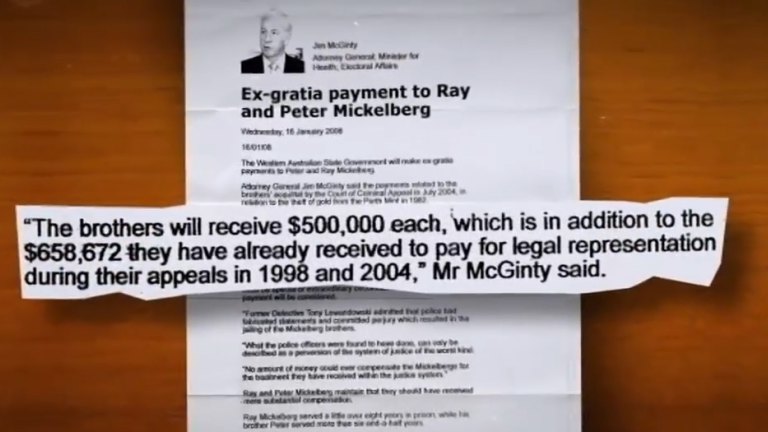Principles of justice have been implemented into the Australian Court system to provide further moderation and equality to varying court cases. The Mickelberg brothers were three brothers convicted of stealing multitudes of gold from the Perth Mint in Western Australia in 1983. Ray, Peter, and Brian, accused of the crime were sentenced to 20 years, 16 years and 12 years imprisoned. The leading officers on this case were confident in the conviction of these brothers, and therefore overruled the common regulations and guidelines within the criminal trial. The case (also known as the Perth Mint Swindle) presented the strengths and weaknesses of the Australian court system and its relevant principles of justice. In the Mickelberg dispute, the principles of justice were partially upheld and carried out. Concerning this case, the common principles of justice applicable to this feud are high-quality evidence, an independent and impartial judge, and the right to appeal. All of these principles were consistent with the Mickelbergs’ case and were occasionally reinforced.

The necessity of high-quality evidence presented as a principle of justice was predominantly compromised in the Mickelberg brother’s case. High-quality evidence refers to the standard of evidence presented in court, required to be thorough and direct, and not based upon assumptions. An example of this in the Mickelberg case was two leading officers within the case (Hancock and Lewandowski) throughout the investigation mistook excessive measures of evidence for the case to be provided in court. Examples of this included false admissions by Peter Mickelberg, a conspiracy evidence piece, and variations in versions of evidence between one another. Commonly, evidence like this would be exhibited against the principle of justice and presents bias from the police officers’ and similar parties’ statements. This implies that the prerequisite of high-quality evidence was adjusted and not visible within the case. Although there is no possible solution to prevent this from occurring, prejudice towards the Mickelbergs’, using this statement earlier on in the case would lead to an opposing opinion favouring them. On the other hand, both officers’ evidence was commonly credible within their previous investigations. This can lead to the possibility that evidence within the court was miscommunicated and/or mispresented and misinterpreted. This circumstance would determine the Mickelbergs’ case to be a one-off and be a simple variation within the principles of justice. However, later in the case, the quashing of the Mickelbergs’ conviction resulted from the admission of the fabricating of evidence by officer Lewandowski. High-quality evidence within the demonstrated case was essentially compromised.

An impartial and independent judge within the Mickelbergs’ case was somewhat presented. An independent and unbiased judge refers to participating judges and magistrates being separate from influence and lawfully conducting the case. Within the Mickelbergs Case, the judge/jury was independent and impartial and followed the necessary precautions in the Australian court system. Their decisions on the Mickelbergs’ case were based upon the evidence presented to them. Not only this, but it was highly unlikely that any outside court influence varied the decisions of the jury and their relevant reasoning. Although the main evidence which was used to imprison the Mickelberg brothers were later found to be fabricated, they did not know of this and could not use this to provide an opposing decision. On the other hand, the possibility of knowledge of fake evidence would lead this principle of justice to have been compromised. However, the appeals by the Mickelbergs about the counterfeit evidence later led to the release of them, to the decision by the judge. This implies that in the original case there was no prior knowledge of the evidence and that the judge was autonomous without any external influence. A solution to this issue could be the isolation of acting judges or juries, to allow proper judging within the case, and prevent similar types of outcomes within the court. However, in the general majority of cases, there are common media influences and false statements in the judge or jury often to understand and have influenced their decision. This leads us to believe that from formal knowledge the judge was fair, however, we can recognize the large possibility of media influence upon them. The Mickelbergs’ case consisted of a partially independent and impartial judge and lead to a moderately fair authentic court case.

Within the Mickelbergs’ case, the principle of justice being the right to a reasonable appeal was somewhat compromised and supported throughout. The right to a reasonable appeal refers to the ability to have your case reviewed by a higher court whilst unhappy with your result. Throughout the Mickelbergs’ case, Ray, and Peter appealed numerous times (approximately seven). The brothers upheld their appeals, claiming that their confessions were fabricated by the police (Lewandowski and Hancock), and therefore had insufficient evidence to prove them guilty. Upon these appeals, all were rejected and predominantly ignored, even though the evidence proving the Mickelbergs’ innocence was up to standard for a successful appeal. Although in future the evidence by the leading officers was found to be fake, this compromise in the case was not led by the appeals made by the Mickelberg brothers. This displays the common ignorance of the courts referring to the presented appeals by the Mickelberg brothers. A common resolution to this issue would be to on behalf of the Mickelberg brothers, to provide more fair appeals and hearings via providing more options for them, and for the justice system to be more understanding of the Mickelbergs and similar situations. On the other hand, we can identify the possibility of the poor standard of the appeals presented by Ray and Peter, leading to the opportunity in which they achieved fair appeals, and were fairly judged upon these, up until the revolution of the mistaken evidence by the leading officers. The right to a reasonable appeal in the Mickelberg brothers’ case was frequently compromised, with the occasional opposing possibilities regarding the standard of the Mickelbergs’ appeals.

In 1983, the Mickelberg brothers were framed for stealing a mass amount of gold from the Perth Mint. The length of this case presented many different principles of justice and the strengths of these principles being upheld and compromised in the collection of examples. Examples of these were the right to a reasonable appeal, an impartial and independent judge/jury and high-quality evidence. The majority of these were compromised in most cases, and although this case was a representation of the negatives of the justice system, there were different possibilities in which justice was upheld. All of the following led to the false conviction of the Mickelberg brothers, which could have been easily solved without the prior assumption of guilty upon the three brothers. Miscarriage of justice was predominantly carried out within this case.